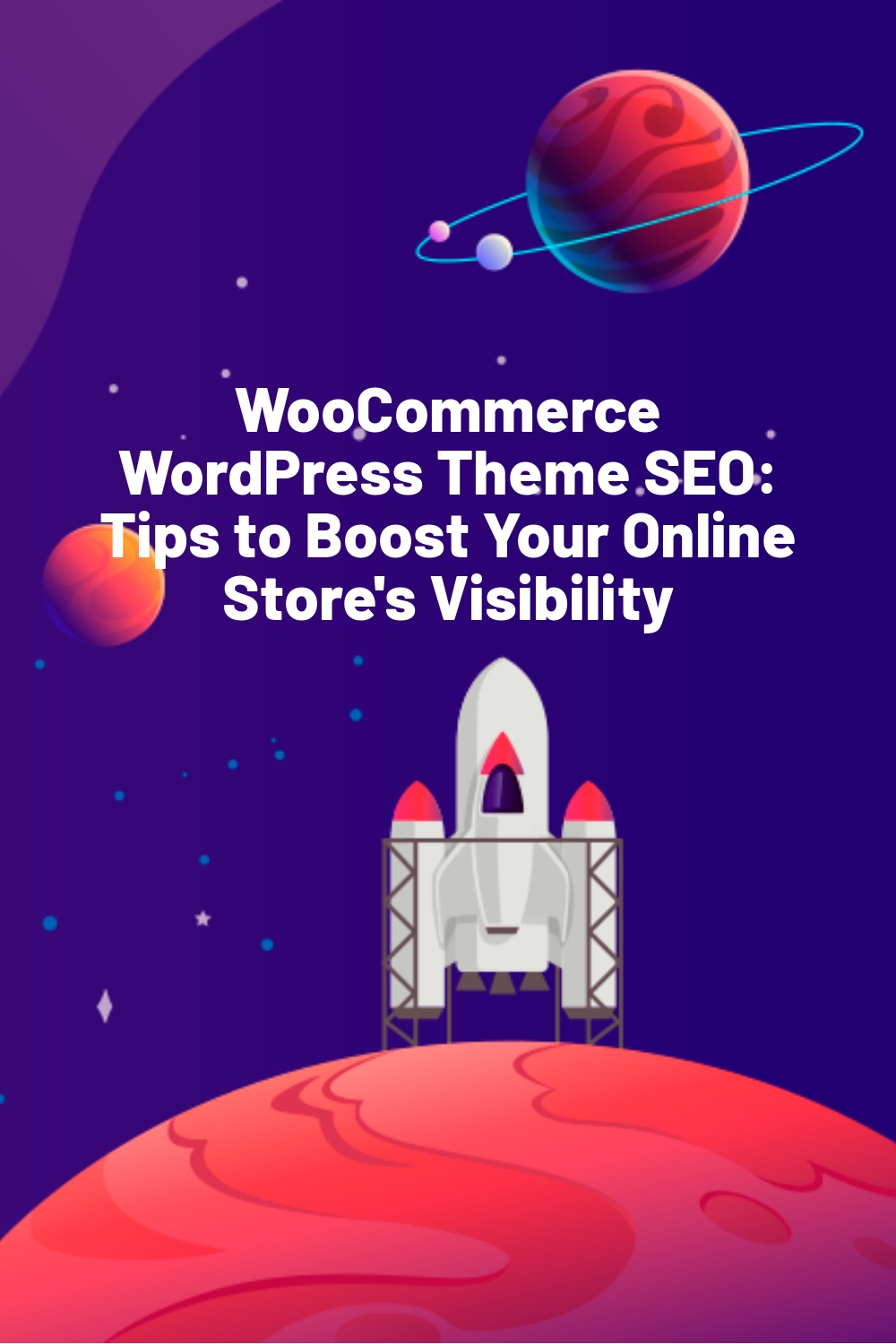WPLift is supported by its audience. When you purchase through links on our site, we may earn an affiliate commission.
WooCommerce WordPress Theme SEO: Tips to Boost Your Online Store’s Visibility
Talk to most people about search engine optimization for your online store, and chances are that most of the conversations will revolve around subjects like keywords and user-friendly content.
While all of that is undoubtedly essential, it’s worth considering not only how your WooCommerce WordPress theme affects the SEO performance of your store but how you can use that theme’s features and design options to your advantage in optimizing your site for better search rankings.
Below, we’ll share our top tips, tools, and strategies for boosting your online store’s visibility with an SEO WooCommerce theme.
5 Top Tips for WooCommerce WordPress Theme SEO
1. Use a Mobile-Friendly Theme
Given that over 60% of all global website traffic comes from mobile devices, we doubt you’ll find any theme released in the last several years that doesn’t at least claim to be mobile-friendly.
Still, as we said in our guide to comparing responsive WordPress themes, we’ve seen many themes that say they’re responsive but only work correctly on a small number of screen sizes.
Such themes simply aren’t good enough if you’re going to achieve maximum success with your eCommerce site.
To please Google (who count mobile-friendliness as a significant ranking factor), you’ll need to ensure that your site looks good, functions flawlessly, and delivers quality user experiences on smartphones, tablets, and other devices of all sizes and screen orientations.
The Google Mobile-Friendly Test can help with this, as can our detailed guide to testing the responsiveness of your WordPress theme.
2. Prioritize Performance
It’s impossible to understand how important speed and performance are to the success of your website.

Article Continues Below
Put simply, if your site takes too long to load, many people will leave, and very few will return.
This is why it pays to prioritize performance both when selecting your WooCommerce theme and when utilizing it.
Picking Performance-Optimized Themes
When picking a theme, first consider its weight. The heavier a theme is, the more damage it will do to your performance.
Next, look at the number of required plugins you’ll need to install to use the features you need.
It may be impossible to run a secure, dynamic online store without at least a handful of plugins. However, some themes come pre-bundled with a large number of plugins that the theme won’t work without, while others lack certain features that you have to make up for with a plugin.
Each plugin you install takes up resources that affect your performance, so the more plugins you use, the bigger the impact on page load speeds.
Maintaining Optimum Performance as You Develop Your Website
Even if you pick the most lightweight theme possible and have the bare minimum of plugins installed, it’s still possible that you could slow down your site by overdoing it with the customizations.
Thanks to the growth of page builder tools like Elementor and Beaver Builder, novice designers can change every single aspect of their website to suit their liking and even add features such as animations which -though admittedly very cool- are rarely necessary.
It’s as easy to get carried away adding a ton of features and content as it is to make simple responsive design mistakes, both of which can hinder your performance.
3. Ensure Clear, Logical Structure and Navigation
The experiences your customers have while browsing and interacting with your store can make or break your eCommerce business.
Google rewards websites that deliver smooth, intuitive user experiences, meaning the better user experience you provide, the greater the boost to your online store’s visibility.
Ultimately, this affects all the decisions you make about how you create your online presence. We’ve already seen how user experiences impact the choices you make regarding performance and mobile-friendliness. Still, there’s another fundamentally important aspect that makes a significant difference in the way people enjoy your site:
Structure and navigation.
Your product pages, landing pages, blog posts, and other content should all be well-organized in a logical manner and easily accessible no matter where users land on your site.
Your choice of WooCommerce theme -and the way you use it- can help with this in the following ways:
A. Delivering Intuitive Experiences
It’s fair to say that most -if not all- Internet users have certain expectations regarding how a website should be laid out.
They expect sites to start with a well-designed, well-placed header featuring a clearly visible logo that tells people precisely what website they’re on, followed by a navigation menu that helps them quickly get to the most important parts of the site.
In your case, this is going to be your products, your About Page, your Contact Page, and most likely a link to their shopping cart.
They expect well-organized footers containing links to other useful information, such as:
- Terms & Conditions
- Privacy Policy
- Shipping information
- Social media icons.
In terms of your product pages, they expect to see the most important stuff -product images, title, price, and key features- at the top, with a visible ‘Add to Cart’ button followed by other useful details such as a description and customer reviews.
The way you layout your WooCommerce WordPress theme should meet these expectations so that when customers land on your site, everything feels intuitive. They know exactly where to look to find what they want and can easily find it.
Trying to reinvent the proverbial wheel with a site layout that deviates from the norm does less to showcase how unique and innovative you are than it does to confuse users.
Ultimately, this leads to higher bounce rates. High bounce rates lead Google to view your site as less valuable and relevant to users searching for your target keyword, and Google viewing your site in this way negatively impacts your search rankings.
For this reason, you may benefit from using a WooCommerce theme with custom header and footer options, giving you complete control over these two crucial elements of your site.
B. Organizing Large Stores With Sub-Menus
If you read our guide to WordPress categories and tags, you’ll understand the value of using these two features to group related products and blog posts together to give customers more of what they want.
Doing so keeps customers on your site for longer, reducing your bounce rate and signaling to Google that your site is relevant and valuable.
Once you’ve organized your content this way, this organization must be reflected in your menus.
However, if you have a large number of product categories, you and your visitors will benefit from them being arranged into sub-menus.
To give an example, let’s say you run a women’s fashion store.
You have 20 main product categories (jeans, shoes, dresses, etc.), each stocked with products from 10 different well-known brands.
You want to boost sales for each product category and every brand, so you cram them all into your top menu.
The result is a cluttered, awkward-looking mess that damages the integrity of your layout and overwhelms visitors.
To avoid this, it pays to make good use of sub-menus in your WooCommerce theme design.
To stick with the example of our online fashion store, this may mean that your primary navigation menu features just two product-related menu items:
- Shop By Product
- Shop By Brand
Underneath each one, you would add a sub-menu that remains hidden until a user clicks one of those items, at which point this secondary menu appears as a drop-down.
Your Product sub-menu would include a separate link to each of your product categories, while your Brand sub-menu would include links to tag pages containing all the products by the individual brands.
Ideally, you’d also use WooCommerce filtering options so that customers could, for example, start by selecting a brand from that menu and then narrow down to see only shoes from that brand or start with shoes and then narrow down to only see footwear from a particular brand.
- Utilize Schema Markup
Schema markup is a form of structured microdata that provides search engines with additional context and information about your content.
The more search engines like Google understand your pages, the better job it can do at returning that content as a result for the most relevant search terms.
This is why you’ll benefit from ensuring your WooCommerce theme supports schema markup.
Some of the very best themes actually come with pre-built schema markup optimized for e-commerce websites. If yours doesn’t, you’ll benefit from installing a top schema markup plugin like https://wplift.com/schema-pro-review Schema Pro or WP Schema.
5. Utilize an Up-To-Date Theme for Maximum Security
Last but certainly not least, never underestimate how crucial it is to ensure that your WordPress theme is up-to-date and compatible with the latest version of WordPress.
WordPress rolls out updates regularly. In 2022 alone, there were three major updates and seven more minor updates to fix bugs.
A WordPress theme that hasn’t been updated to keep up with these developments to the core software can contain a surprising amount of vulnerabilities, including outdated code, insecure file permissions, and other security flaws.
Expert hackers are all too aware of these vulnerabilities and how to exploit them, which is why sites with outdated themes are typically a prime target for things such as:
- Malware attacks
- Data breaches
- Malicious redirects
- Website content being replaced with offensive/illegal content.
With all that in mind, it’s vital that you use a WooCommerce theme made by responsible developers who remain proactive in updating their themes.
Not that all the responsibility lies on the creator of your theme. Unless you’re using a managed WordPress service (in which case the job is done for you), you’ll need to pay attention to any new updates that become available and activate them on your site.
After all, you probably don’t need us to tell you the damage a compromised website can do to your online visibility.
See our guide to the best WordPress security plugins to add an extra layer of protection to your WooCommerce theme.
Optimizing WooCommerce WordPress Themes for SEO: Final Thoughts
If you only take one thing away from today’s guide, it should be that delivering the best possible user experience is key to your SEO success.
Yes, it’s important to use the correct metadata and effectively implement schema markup to help search engines understand and rank your content, but the bigger gains will come from ensuring your site is fast, responsive, easy to navigate, and secure.
Tick all those boxes, and customers will enjoy shopping in your online store time and time again. The more they do, and the more time they spend on each visit, the more search engines will reward you with higher visibility in search results.
For more suggestions on how to boost your eCommerce site’s online presence, see our top 20 WordPress SEO tips.







